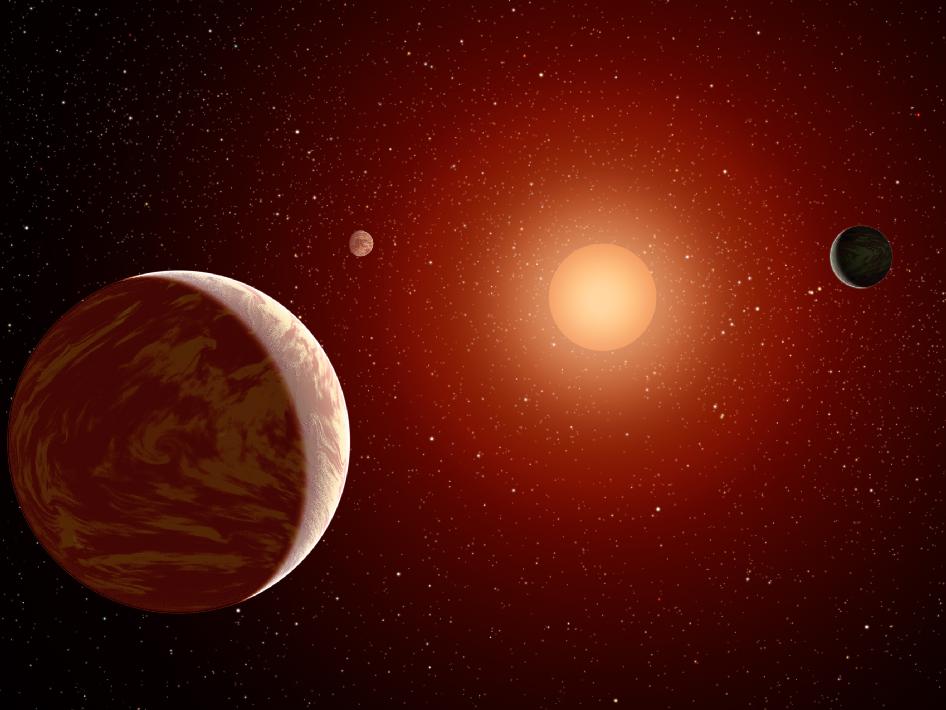
This artist's concept illustrates a young, red dwarf star surrounded by three planets. Such stars are dimmer and smaller than yellow stars like our sun, which makes them ideal targets for astronomers wishing to take images of planets outside our solar system, called exoplanets. Image credit: NASA/JPL-Caltech
› Full image and caption Astronomers have come up with a new way of identifying close, faint stars with NASA's Galaxy Evolution Explorer satellite. The technique should help in the hunt for planets that lie beyond our solar system, because nearby, hard-to-see stars could very well be home to the easiest-to-see alien planets.
The glare of bright, shining stars has frustrated most efforts at visualizing distant worlds. So far, only a handful of distant planets, or exoplanets, have been directly imaged. Small, newborn stars are less blinding, making the planets easier to see, but the fact that these stars are dim means they are hard to find in the first place. Fortunately, the young stars emit more ultraviolet light than their older counterparts, which makes them conspicuous to the ultraviolet-detecting Galaxy Evolution Explorer.
"We've discovered a new technique of using ultraviolet light to search for young, low-mass stars near the Earth," said David Rodriguez, a graduate student of astronomy at UCLA, and lead author of a recent study. "These young stars make excellent targets for future direct imaging of exoplanets."
See the website for more details.
http://www.nasa.gov/mission_pages/galex/galex20110407.html(SY)
